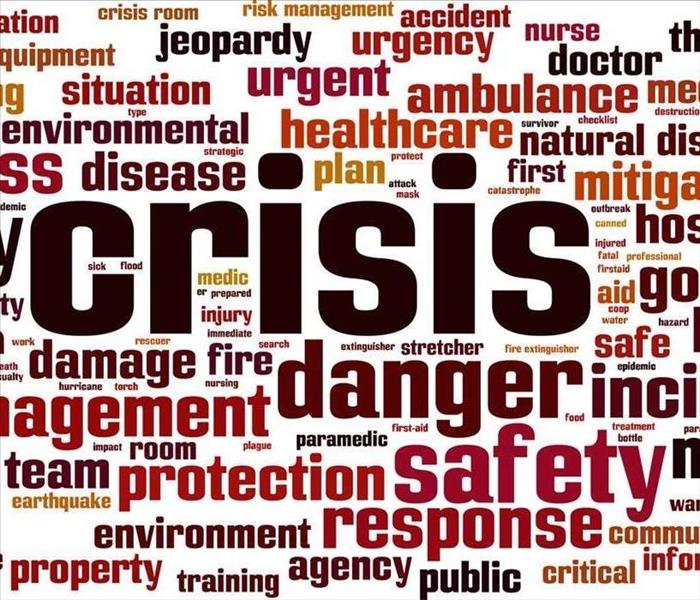Basic Disaster Preparedness Steps
7/24/2020 (Permalink)
Natural disasters present a lot of pressing challenges to business owners, and it can be difficult to determine the best route for disaster preparedness. After all, the preparedness plan must include answers to many potential scenarios:
- What if roads are blocked and your employees or suppliers can't get through?
- What if winds knock down power lines?
- What should happen if your building is damaged by wind, rain, flooding, or other natural elements?
- How will you respond if employees are injured during the disaster?
These and other concerns must be addressed by your business preparedness plan. Here are a few basic steps you can take to get started:
3 Steps For Disaster Preparedness
One: Plan for Employee Safety
This should include installing fire extinguishers, first aid kits, and other safety equipment. Don't forget to create and practice an evacuation plan. You may also want to put together a phone tree for maintaining communication with staff and employees. Write up a contact list with customers, disaster cleanup professionals, employees, insurance providers, and suppliers.
Two: Purchase Appropriate Insurance Coverage
Not only does this step give you peace of mind knowing that any damage will be covered financially, but it also gives you access to valuable disaster preparedness and risk-avoidance advice. An experienced insurance professional will give you tips that are specific to your White Bear Lake, MN, business.
Three: Establish a Second Location
During a major storm, it's often possible to remain operational by setting up a temporary workspace. You could also set up your software, programming, and other data in a cloud service, so employees can do their work from home.
Of course, there are many other things to consider, such as protecting your building from damage and how to determine when it's safe to return to your building. Fortunately, there are many valuable resources online, through your local government agencies, from your insurance provider, and through local emergency authorities, such as the fire department. Make time today to begin your plan or to update your existing disaster preparedness plan.

 24/7 Emergency Service
24/7 Emergency Service
